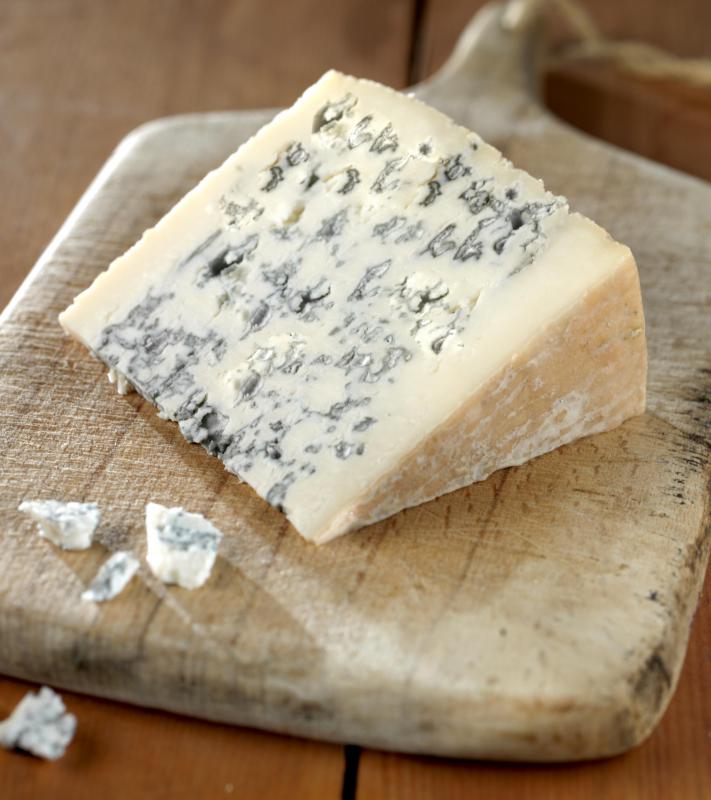At DelightedCooking, we're committed to delivering accurate, trustworthy information. Our expert-authored content is rigorously fact-checked and sourced from credible authorities. Discover how we uphold the highest standards in providing you with reliable knowledge.
What is Roquefort?
Roquefort is a type of blue cheese that is renowned throughout the world as the 'King of Cheeses, Cheese of Kings'. Named after the village of Roquefort in Aveyron, in the south of France, this blue cheese is especially infamous for its pungent smell and characteristic blue veins of mold. Equally fascinating is its unique production process. In fact, Roquefort falls under the 'protected designation of origin' (PDO) provided by the European Union Law.
The PDO defines that Roquefort must be produced following certain regulations, such as the use of milk from a particular breed of sheep, the location in which the cheese is matured, and the type of mold used for the maturation process. Hence, to guarantee the quality and purity of Roquefort, only milk from the Lacaune ewe is processed and cultured with a fungus called Penicillium roqueforti and left to naturally mature in the Combalou caves in Roquefort village.

The story behind the origins of Roquefort blue cheese has been romanticized in a very old legend of the land. The legend begins with a young shepherd who was minding his flock of sheep in the hills of Roquefort when he suddenly sighted a beautiful maiden in the distance. Determined to find her, the shepherd left his dog to guard the sheep and hastily placed his lunch – bread and ewe's milk curds – in the nearby caves to keep cool.
The shepherd was away for days, looking for his maiden. Unfortunately, he never found her. Dejected, the shepherd returned to his sheep, tired and hungry.

When he took his lunch out of the caves, he found that the bread and milk curds were moldy. His hesitation was brief due to his mounting hunger. With some trepidation, the shepherd took a bite and was pleasantly surprised to find that his moldy lunch tasted quite delicious! Thus, the Roquefort was born.
The production of Roquefort blue cheese involves a series of processes, beginning with the delivery of Lacaune ewe milk to the dairy. Once there, the milk goes through some chemical and bacteriological tests to ensure that only the highest quality milk is used to make Roquefort. After these tests, the milk is heated to between 82.4°F and 93.2°F (28°C and 34°C) and placed into large vats.

Spores of the fungus Penicillium roqueforti are then added to these vats, allowing the milk to ferment into curds. Once the curds are ready, they are cut into cubes and transferred into cheese molds, where they are drained and salted into cheese loaves. The cheese loaves remain at the dairy for another ten days before being relocated to the Combalou caves for natural ripening.

Before entering the damp caves, the cheese loaves are pierced through about 40 times. These small holes allow air in and encourage the growth of the mold fungus. The cheese loaves are left exposed for two to three weeks to ensure that enough mold has grown into the cheese. Once there is sufficient Penicillium roqueforti in the cheese, the loaves are wrapped up and left to mature under lower temperatures. Three to ten months later, the cheese loaves leave the caves as Roquefort blue cheese.
Roquefort blue cheese is an acquired taste. Many are thrown off by its strong smell and do not attempt to taste it. This is a pity, since the Roquefort's moist and creamy texture is indeed a delectable experience not to be missed.
AS FEATURED ON:
AS FEATURED ON:














Discussion Comments
My husband absolutely loves blue cheese. He puts it on just about every salad he has. I don't think he's ever heard of Roquefort though, and I know that he would love to try it. Does it cost a lot to buy Roquefort? It certainly sounds like it would.
I'll have to look into getting some for him. Although I really don't even understand how it is safe to eat. I always thought that moldy food was something to be avoided, not something to enjoy. How is it that this cheese doesn't make people sick?
I never knew there could be such a strict and complicated process for making cheese! I wish I liked blue cheese, because learning about the requirements for it's production and the legend of how it was first discovered all makes it seem very special.
My question is, are the Roquefort caves used strictly for the aging of cheese now?
If this cheese is an "acquired taste," then I acquired that taste with the first taste. God scored a "ten" on this one.
Post your comments